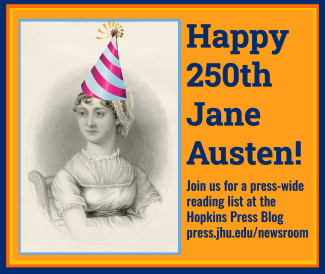
Johns Hopkins UniversityEst. 1876
America’s First Research University
Writing to the World

Since the 2016 presidential election, we have had almost daily reminders of the prevalence of “fake news” in our new, Facebook and Twitter-reliant media landscape. Frequently, the blame for this phenomenon falls on the media themselves, as commentators contrast the ephemerality and speed of digital technologies with the stability and fact-checking of print. But none of these features are inherent in the media—the difficulty of eliminating an unwanted search hit, for example, upends the idea of “ephemerality.” In the eighteenth century, print was the suspect medium, as the very qualities now attributed to the Internet—impermanence, anonymity, and partisanship—were sources of concern in the developing news industry. English readers were seen as having a particular “itch” for news, but they had to devise new methods for authenticating information and putting it into context with their existing systems of news distribution—just as we are doing today.
When I started graduate school in 2009 I was coming off of several years as a professional journalist, and I thought that my dissertation would be a literary history of journalism—The Spectator through David Foster Wallace, or something like that. I first learned that those kinds of cross-period dissertations are very difficult to write, but I also started to notice something strange when looking at the earliest examples of news writing from the late seventeenth and early eighteenth centuries: these papers didn't have articles but, rather, lists of letters. Almost all of the newspapers foregrounded the fact that the authors/editors weren't doing their own reporting—they were cutting and pasting from either handwritten letters or other pamphlets and newspapers they had received in the post. And in order to distribute their aggregations, they had to use the post again, especially for news either coming from or going to provincial locations. These were practical methods, but they were also ones that bolstered the reliability of print, placing new kinds of news in the context of people’s existing epistolary networks. Consumers were taught to apply the skills they had already developed for judging circulating information to new forms of print.

Although literary scholars are familiar with the idea that the novel originated in epistolary form, I was soon seeing letters everywhere in eighteenth-century print and trying to draw connections across a huge range of genres. My book, Writing to the World: Letters and the Origins of Modern Print Genres, highlights four key epistolary genres—the newspaper, the periodical, the novel, and the biography—to argue that letters helped writers and readers navigate new media systems in the long eighteenth century. By putting innovative kinds of writing in the form of letters, authors and publishers familiarized the still-confusing world of print. In many ways, we can see the same processes at work in our new media, where, for example, newspapers’ web pages replicate the look and organization of the printed newspaper, or where emojis insert facial expressions and real-world objects into digital text. I call these kinds of media-crossing forms “bridge genres”: ones that facilitate media shift by helping writers and readers move between old and new. The concept of the bridge genre helps explain how these transitions happen and why it is that new genres seem to proliferate at moments of media shift—from the development of genres of print in the eighteenth century to the takeoff in emails, blogs, text messages, tweets, web series, memes, GIFs, and personal essays today.
I see the letter as the key bridge genre of the long eighteenth century, a period when the epistolary genre appeared everywhere from personal correspondence to printed collections. Epistolary writing connected manuscript and print forms of communication; many of the period’s foremost innovations in genre emerged through the incorporation of letters, while at the same time letter writing expanded and diversified as a communicative practice. The personal letter was the common factor enabling a host of distinctively modern printed genres to come into being and appeal to readers; it undergirded the literary experiments that pervaded eighteenth-century print culture. In this way, Writing to the World offers a broader model for the process of genre formation in literary history: new genres arise when new media become available and accessible to a mass of users. It shows how new media are not just inflicted on us: we adapt and make pragmatic choices about how to incorporate them into our existing media diets. Rather than seeing the spread of fake news as inevitable, then, we can look to the development of systems for authenticating news in the eighteenth century to see how a long process of accommodation can eventually yield methods for placing trust in new media.
Rachael Scarborough King is an assistant professor of English at the University of California, Santa Barbara. She is the author of Writing to the World: Letters and the Origins of Modern Print Genres.


